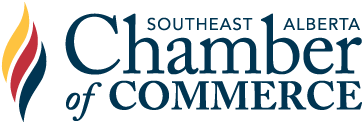Concerns around Development and Infrastructure Division Fees and Charges

Concerns around Development and Infrastructure Division Fees and Charges
Executive Summary
Similar to what was experienced in 2011, new development and infrastructure fees were adopted in December 2024 for 2025 and 2026, resulting in some significant increases in several fees and charges. The proposed increases are in an attempt to recover costs of the Planning & Development Services department. While many of the development fees see modest to moderate increases, the significant variances were most notable in the business license fee changes with increases ranging up to over 600% for some of the new tiered classifications With many of the challenges our businesses are facing with increased costs and declining business activity, the Southeast Alberta Chamber of Commerce recommends that the City of Medicine Hat re-evaluate options for implementing the new tiered business licenses structure and consult with industry, key stakeholders and organizations for implementation of the fee structures that can be more reasonably implemented over a period of time. As previously recommended, any fees and charges should be based on a baseline structure, with incremental percentage increases over a period of time, taking into consideration cost of service delivery and taking into consideration natural inflationary costs.
Background: Why this Matters
On review of the 2025-2026 fees and charges schedule for 2025 and 2026, Medicine Hat remains higher than comparable sized Cities in Alberta. We recognize that the fees were set taking into consideration inflation, cost recovery, time required for public engagement and appeals, as well as enforcement expectations and costs. We also appreciate that the fees and charges table has been simplified, that some fees have been consolidated and that the e-permitting charge has been eliminated.
The Southeast Alberta Chamber of Commerce noted improvements in the new 3-year license option, a reduced not for profit rate and the elimination of an additional home-based business ‘surcharge’ that previously had been charged and added as an additional fee to the business license category classification.
Medicine Hat is lagging behind other communities in Alberta in building permits construction and business growth. In addition, within the 2023 Development Statistics, we have continued to see declining trends since 2019 with some growth in 2021 and current development permits trending lower than those in 2019. Similarly we have seen a decline in the number of businesses and building permits since our peak in 2006. Fee increases only serve as an additional deterrent to investment in our community. The Chamber is very cognizant of the business climate and in turn has also been very conservative when evaluating rates and fees.
With City Council’s focused 2-year strategic plan, which highlights a priority of fostering a dynamic and thriving community economy, further stipulating a desire to create opportunities to incentivize business and reduce barriers, imposing significant fee increases well above inflation and even well above a 10-20% increase could be perceived to be misaligned with the strategic priorities.
If Planning and Development evaluated fees charged by comparable-sized cities, reflecting local market conditions and unit cost for service, excluding public engagement and appeal requirements, it would provide a better idea of reasonability on fee structures.
Rate reviews should be conducted each year to prevent “rate shock” and create a structure that is more reasonable and justifiable to the end user. If rates are reviewed on a regular basis and are in line with the rate structures of similar-sized municipalities and local economic conditions, while not significantly increasing in any given year, then an environment is created that is more manageable and palatable to the business community.
During these slow and volatile economic times, Medicine Hat businesses are cutting back, watching expenses and reducing profit margins. Our municipality should be no different with a need to evaluate cost structures and expenses to become more efficient and seek ways to further promote growth and development.
Our Recommendations:
The Southeast Alberta Chamber of Commerce recommends that the City of Medicine Hat:
- Re-evaluate the increases in fees and charges and consult with industry, key stakeholders and organizations for reasonable fee structures that are implemented over a period of time.
- Base any fees and charges on the current baseline structure, with incremental percentage increases over a period of time, in line with the cost of service delivery and taking into consideration natural inflationary costs.
- Revert back to the 2024 fee structure until more research and municipal comparisons can be gathered and referred back to the Development & Infrastructure committee for reconsideration, evaluation, consultation and resubmission.
- Communicate the justified “Fee for Service” per unit cost, including distinction between one off services, such as: open houses, bylaw enforcement, and formal appeals.
- Compare fees with other comparable-sized cities for reference for research purposes to align with other fee structures charged.
- Ensure any future fee proposals include the percentage increase comparable to prior years.
- Ensure that public engagement and appeals do not adversely impact the cost of fees to develop.
What have we worked on for our members....
We have worked with the City of Medicine Hat since 2011 on not only fees, but also various other recommendations to create a more business-friendly regulatory environment and with the success in 2012, we have continued ongoing work. We were pleased to see the new 3-year license option, a reduced not-for-profit rate, and the elimination of an additional home-based business ‘surcharge’ that had previously been charged, which is something we have been advocating for.
In line with our other policy recommendations, when we were made aware of the new rates being proposed, we requested the year-over-year variances and comparisons so we could evaluate where the changes were occurring and so we would have time to inform and advise our members. When we were unable to receive the requested information due to the different categories and classifications in the new model, we did our own analysis and comparisons from data going back to 2022. At that time, it was determined that we needed to review and update our previous policy from 2011, understanding that any rate decisions were a Council decision.
We provided a letter to City Council on March 26, 2025 with the knowledge that Council also had a motion for more information to be brought back to the City Council. Following the information that was presented to the Development and Infrastructure committee on April 3, we sent a follow-up letter on April 17, 2025, knowing the item was coming back to Council.
Our hope was that the City would identify potential adjustments that could alleviate some of the financial pressures on small businesses, while still ensuring continued development and financial sustainability and balancing the financial pressures of both the public and private sectors. In our last letter of April 17, we requested that the Council re-evaluate the 2025-2026 fee increases in consideration of the priority to create opportunities to incentivize business and reduce barriers to achieve a dynamic and thriving community economy.
There was a presentation to the City Council with a summary of 2025-2026 Business License Fees at the May 5 City Council meeting, but no further changes were proposed.
Based on the information provided in the business plans, we anticipate this will be reviewed again in 2026:
As a Chamber, we will keep our recommendations active and present our policy recommendations following the 2025 Municipal Election, as there is no further consideration that will be made during the remaining Council term.
